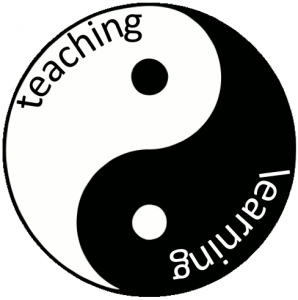I spent last evening having a thoughtful discussion with other educators about a wide range of issues. From integrating technology to creating authentic learning to getting beyond the “testing season,” we dug into the complex concerns about how to provide the best possible education for our students. What we didn’t discuss as much was the impact ubiquitous computing might have on educators.
We know that testing has put more and more pressure on teachers but what about all those devices and that access? I hadn’t thought much beyond the classroom setting until I happened to read this Education Week blog entry reviewing an ISTE presentation on the challenges of mobile devices. The article focused on problems related to sending school-owned devices home with kids and general planning related to rolling out 1:1. But here was the paragraph that struck me:
Devices have been distributed to ninth graders in the district, and students are using them to complete practice problems in class, create videos about how to approach problems, and video chat with teachers from home when they are working on homework. Having that 24-7 support helps academically struggling students get their questions answered and allows teachers to provide more personalized feedback to each student, said Friebel.
I know teachers are all about helping their students as much as possible and many work long past the scheduled work day already. But aren’t we expecting a little too much when we think they should be providing 24/7 support to their students? The article doesn’t say anything about the expectations that have been set for teachers in terms of being online outside of school hours. Are those video chats scheduled? Or do students simply “pop in” when they see their teacher online? What about email or instant messaging? Are teachers expected to provide their phone numbers to students so they can answer their students whenever and wherever they receive messages? I’m imagining the kid who complains that he couldn’t finish his homework because Mrs. Jones wasn’t available for a video chat when he got home from the football game at 10 PM or didn’t answer his 2 AM email.
Talk about trying to find a work/life balance…
